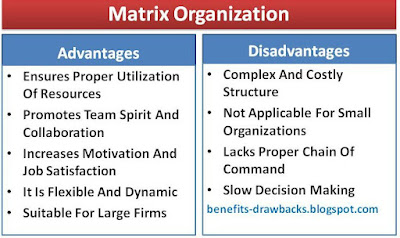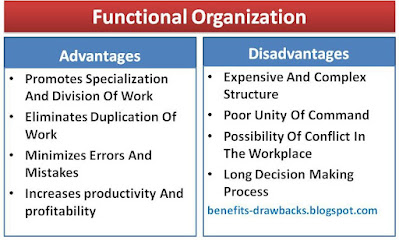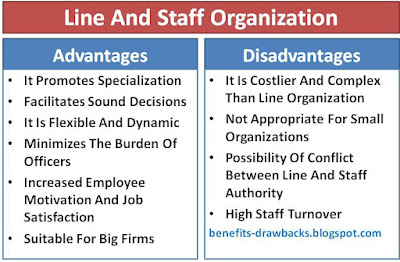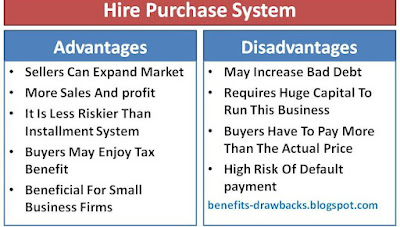What Is Matrix Organizational Structure ?
Matrix structure is practiced by large sized organizations to perform different projects. It is consist of dual authority (functional and project management), in which subordinates are responsible for both project and functional managers. It is highly specialized and advanced organizational structure practiced by modern large companies.
Benefits Or Advantages Of Matrix Organization
The main advantages of matrix organizational structure can be pointed out as follows:
1. Optimum Utilization Of Resources
One of the main advantages of matrix organization is that it ensures maximum utilization of resources. Available manpower , equipment and machinery are shared properly among different divisions, projects and functional departments. Therefore, it helps to improve the performance and output by using limited resources.
2. Collaboration And Teamwork
Employees and specialists from different functional areas are brought together to improve the performance. This structure combines functional and project management which helps to make collaboration between different projects and departments. It also promotes the sense of team spirit in the workplace.
3. Improves Employee Motivation
Matrix organization promotes specialization, provides opportunity to gain knowledge and develop new skills to the subordinates. It helps to increase motivation, morale and job satisfaction.
4. Less Burden To The Management
This organizational structure follows democratic leadership and decentralization. Project managers and functional managers have the authority to manage and monitor operational activities and to make decisions. So, top level management gets sufficient time to deal with other issues in the organizations.
5. Better Communication
Matrix structures allows the flow of information and open communication between different divisions and projects. Better communication between employees and departments helps to avoid misunderstandings and also helpful in solving problems.
6. Flexibility
It is more flexible and dynamic than other types of organizations. Employees and other resources can be deployed as per the requirement and changes can be made to cope with the changing environment.
7. Suitable For
This organizational structure is suitable for large sized companies which work for multiple projects and construction works.
Drawbacks Or Disadvantages Of Matrix Organization
The main disadvantages of matrix organizational structure can be pointed out as follows:
1. Complex Structure
It is the most complex form of organization. Because of dual authority and various functional divisions and projects, it is difficult to understand, manage and to control.
2. Poor Chain Of Command
Because of multiple authority, staffs are responsible for both project and functional management. They have to obey the instructions of two managers. It may result in poor chain of command in the organization.
Also Read:
Advantages And Disadvantages Of Committee Organization
Advantages And Disadvantages Of Line Organization
Advantages And Disadvantages Of Line And Staff Organization
3. Costlier Structure
Matrix structure is costlier than other traditional types of organizations. It requires more expenses and resources due to multiple authorities, more paper work and higher remuneration for specialists and experts. Therefore, it is not suitable for small organizations.
4. Confusion And Conflict
If the roles and responsibilities are not defined properly, it may create confusion and misunderstanding between two managers. There is also a chance of conflict between different teams in the workplace.
Project works are performed by the collective efforts of the team. So, it is difficult to measure the performance and efficiency of individual employee.
6. Slow Decision Making
Prompt decision making is not possible in matrix organization. Instructions and suggestions of both authorities, specialists and team members are required to take any decision. So, the decision making process is longer than other types of structures.
Pros:
- It encourages effective use of limited resources in the workstation
- It promotes coordination and teamwork
- It provides learning opportunity to the employees
- It practices specialization, democratic leadership and specialization
- It is flexible and dynamic in nature
- It minimizes the workload of top level management
- It establishes better communication system in the organization
Cons:
- It is complex and costly structure
- It is not suitable for small sized organization having limited resources and limited operations
- It ignores the rule of unity of command
- It suffers from slow decision making process
- Individual performance cannot be measured
- There is a possibility of confusion, misunderstanding and conflict between the authorities and teams.

















